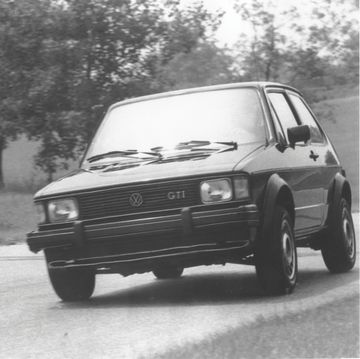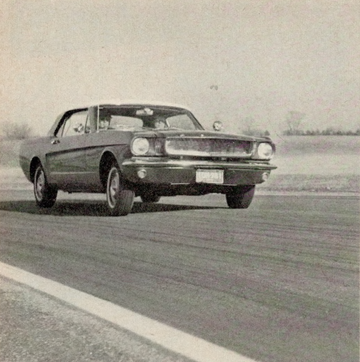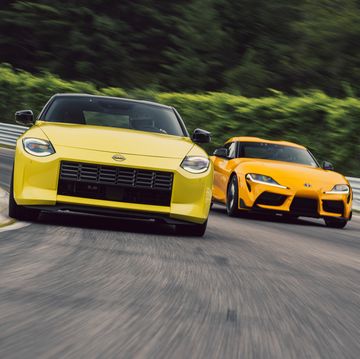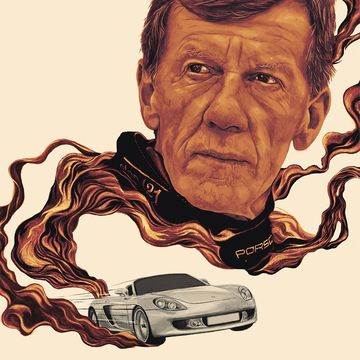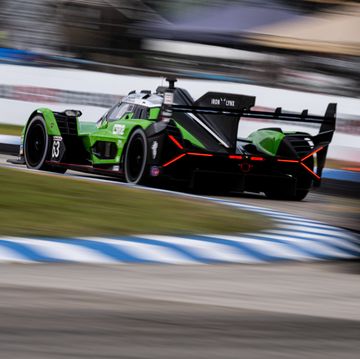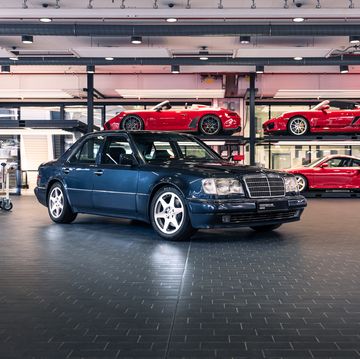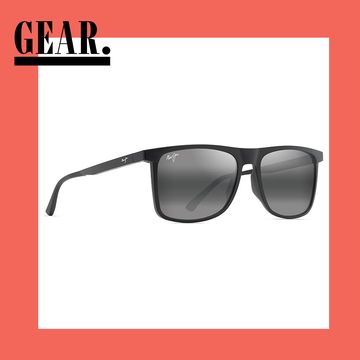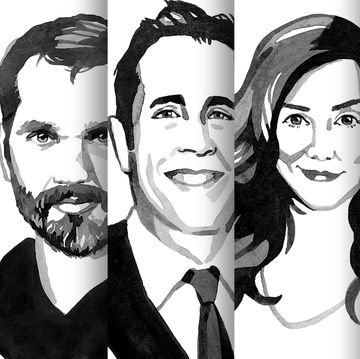This Side Glances essay originally appeared in the March 2012 issue of Road & Track
This past Christmas we got a card from an old racetrack acquaintance named Al Ribskis. Al is an artist with a business called Tech RacinGraphics in Chicago, where he does custom helmet painting, logos, pinstriping, lettering, etc. A few years ago, he did a nice paint scheme on the helmet of my friend and fellow vintage racer, Peter Botham.
Seems Al had read in this very magazine that I'd not only bought myself a new vintage Formula Ford, but had been forced to buy a shiny new white Bell helmet with the currently required 2010 Snell sticker on the inside. My old one had a 1066 Snell sticker in the liner, apparently having been used during the Battle of Hastings (by the losing Saxon side), so it was no longer considered safe, having been struck with a mace. In his Christmas card, Al attached a note asking if I needed my new helmet painted.
I wrote back and said I didn't quite know how to respond, because the "design" I've always had on my helmet is so simple and crude it almost defies professional artistry. Essentially, I've always worn a white helmet with a 1∂-in. stripe of green or blue tape down the center.
This tradition has its dim origins in 1973, when I started racing a bright orange H-Production Bugeye Sprite (later painted green, of course). Orange was a popular racing color in the early '70s, and there were two or three other Sprites painted the same color in our typical field of 25 or 30 cars.
Barb, who was timing me with our new Heuer stopwatch, complained she couldn't distinguish my orange Sprite from several others coming down the front straight—as we all had white helmets—and she kept timing the wrong car. That would explain several of my unofficial lap records.
So before I went back out for qualifying, I reached in my toolbox and grabbed a roll of olive drab Army surplus duct tape, ripped it down the middle and made a swamp-green center stripe for my helmet. It looked exactly like the tape I'd used three years ago in Vietnam to keep sand out of the barrel of an M60 machine gun while on nighttime bunker guard. I never fired this weapon in anger (or even benevolence), so I was merely trying to avoid cleaning it between inspections by our avuncular First Sergeant. Useful stuff, this tape.
Anyway, it looked good on my helmet, and Barb could finally tell which orange Sprite was mine. When I got home that weekend, I replaced the Army duct tape with a more elegant and costly stripe of green plastic tape from the art supply section at Kmart. My helmet at that time was an open-face Bell 500-TX, which is sitting right here on my bookshelf—still with the same green tape on it.
That Christmas, however, Barb gave me one of the fabulous new fully enclosed Bell Star helmets, by then in vogue with F1 drivers. And that was the last year any of us ever saw a driver's face. Those early Stars were safer, but they had a very small eye-port and we all looked as if we were peering out of a propane tank. In lieu of a visage, you now needed a distinctive paint job more than ever.
When it was time to stripe my new helmet, I decided for some reason to switch to blue tape. Maybe it was because my white Nomex driver's suit had blue trim and those were America's racing colors, or because I admired John Surtees. Or all of the above. Anyway, I switched to blue tape for my car racing helmet and kept the green stripe for all my motorcycle racing helmets—which had to meet a different crash impact standard—and they've been that way for about 35 years, through three more generations of Snell stickers and helmets.
Funny that this design came about so casually, because in the early days of my racing fanaticism, paint on helmets (or lack of it, in Phil Hill's case) was a form of latter-day heraldry, as important to a driver's identity as his shield had been to Richard the Lion-Hearted. Every generation finds its symbols for skill and courage, and the helmets of race drivers were ours when I was in high school.
One of my favorites was the checkered flag motif of Innes Ireland. I still have a Road America poster from the '60s with an abstract painting of what appear to be a Porsche 904 and a green Lotus 19 going into a corner together, and the Lotus driver has a checkerboard band around his helmet. You take one look and say, "That's Innes Ireland." Jean Behra had used a similar scheme, but was no longer with us by then.
When I got my first motorcycle helmet in 1966, I painted it a very dark blue because I liked the look of Dan Gurney's helmet—and of course admired his driving. Also, Gurney—like Fangio or Moss—looked good in a helmet, which is not true of everyone. An open helmet draws attention to your face, and some of us are better off creating a diversion. I've found that a loud explosion or a raging gasoline fire in pit row works well.
Someone later told me Gurney's helmet was actually black, so maybe I was fooled by a bad batch of ink in a car magazine. Anyway, mine was solid dark blue until a college roommate borrowed it and threw it through a plaster wall in Chicago after an argument with his girlfriend. This merely added to the many scratches I'd already put on it, so I stripped it back to plain white. Like Phil Hill's.
Probably the most famous and distinctive helmet design of the '60s was Graham Hill's, which had a pattern that looked to me like vertical tent pegs, said to be taken from the colors of his rowing club. I was happy to see that Damon Hill kept his father's helmet tradition going—and became World Champion as well.
I always thought Jackie Stewart's tartan also made a good color scheme, as did Jody Scheckter's wide orange band around his white helmet. Easy to identify. Senna's Brazilian colors were easy to spot as well, but that may be because he was Ayrton Senna, and everyone was watching. James Hunt had a fairly nondescript black helmet with a few colored stripes around it, but it also said "James Hunt" on the side in large block letters, so those of us who could read at a reasonable distance were in good shape.
But, as Lou Reed would say, those were different times. Graphically speaking.
Seems to me helmet designs have now become so elaborate and convoluted it's much harder to distinguish them from trackside. Moto-GP designs, in particular, have gone wild, with writhing snakes and skulls, and fire-breathing dragons of color. No more Mike Hailwood gold stripe.
I watched almost every F1 race on TV this past season, and yet I can hardly picture any individual helmet, except as it mimics the sponsor's paint scheme on the car, such as Vettel's Red Bull logo. Bruno Senna's green and yellow helmet is one of the few I can still spot (go Brazil!), but most are just an extension of corporate marketing, a small billboard rather than a driver's personal coat of arms. It's as if Henry V appeared at Agincourt with a shield that read "Drink Malmesbury Mead!" or "Enjoy Bovril."
Where have you gone, Innes Ireland? I still like the non-commercial, elegantly simple designs.
Although helmet art created purely out of Army surplus duct tape may be too simple for some. It comes dangerously close to folk art, to put the best possible spin on it. So maybe it's time to get that blue stripe painted on accurately and permanently. Or maybe I should go back to green on all my helmets, just for nostalgia. Or olive drab.
No, not olive drab.
In any case, a paint job by Al would look a lot more professional, and it might be a nice 64th birthday indulgence for what could be my last of five racing helmets. At the rate I'm throwing money at my race car, there's only a faint chance I'll be able to afford a helmet with a 2020 Snell sticker in it. Unless we see a much-needed hike in the Social Security helmet allowance.



